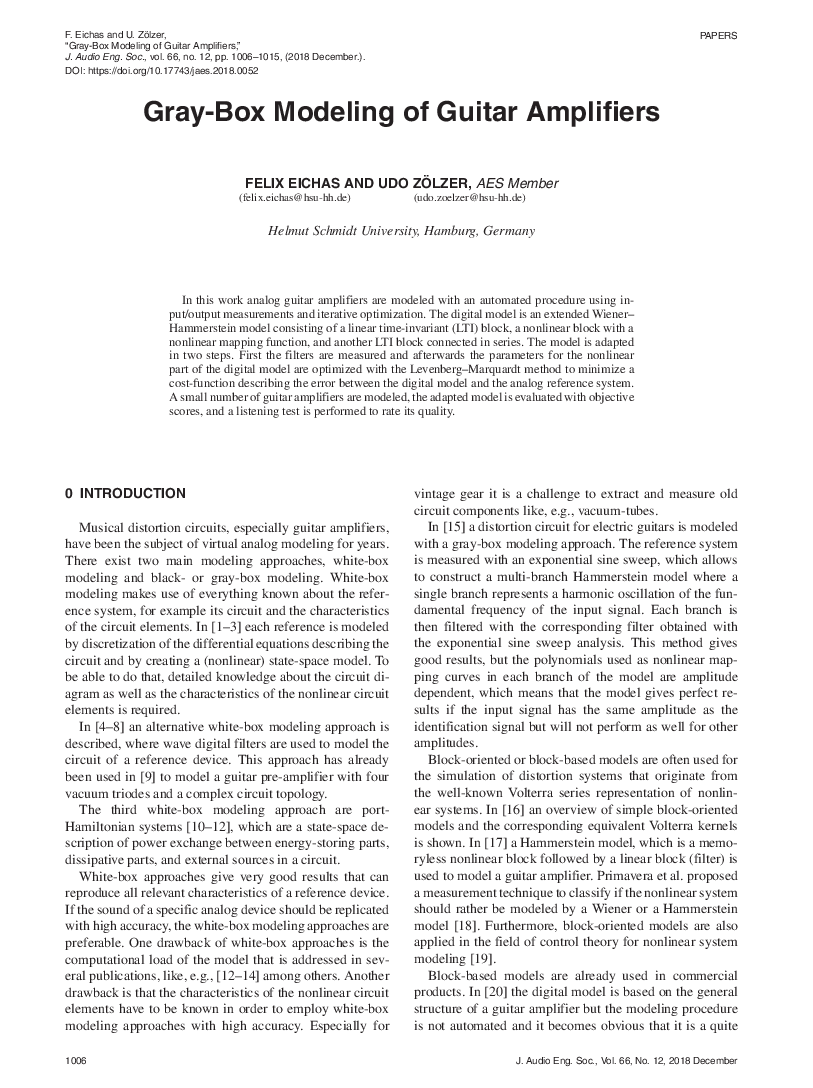Home / Publications / E-library page
You are currently logged in as an
Institutional Subscriber.
If you would like to logout,
please click on the button below.
Home / Publications / E-library page
Only AES members and Institutional Journal Subscribers can download
Musical distortion circuits, especially guitar amplifiers, have been the subject of virtual analog modeling for years. There exists two main modeling approaches: white-box modeling, where the internal properties are fully known, and gray-box modeling, where only the input and output are available. This work proposes a gray-box modeling approach for analog guitar amplifiers using iterative optimization to adjust the parameters of a block-based model. The only assumption made about the reference system is its basic structure. The digital model is an extended Wiener–Hammerstein model consisting of a linear time-invariant (LTI) block, a nonlinear block with a nonlinear mapping function, and another LTI block connected in series. The model is adapted in two steps: first the filters are measured, and then the parameters for the nonlinear part of the digital model are optimized with the Levenberg–Marquardt method to minimize a cost-function describing the error between the digital model and the analog reference system. A small number of guitar amplifiers were modeled, the adapted model was evaluated with objective scores, and a listening test was performed to rate its quality.
Author (s): Eichas, Felix; Zölzer, Udo
Affiliation:
Helmut Schmidt University, Hamburg, Germany
(See document for exact affiliation information.)
Publication Date:
2018-12-06
Import into BibTeX
Permalink: https://aes2.org/publications/elibrary-page/?id=19874
(692KB)
Click to purchase paper as a non-member or login as an AES member. If your company or school subscribes to the E-Library then switch to the institutional version. If you are not an AES member Join the AES. If you need to check your member status, login to the Member Portal.

Eichas, Felix; Zölzer, Udo; 2018; Gray-Box Modeling of Guitar Amplifiers [PDF]; Helmut Schmidt University, Hamburg, Germany; Paper ; Available from: https://aes2.org/publications/elibrary-page/?id=19874
Eichas, Felix; Zölzer, Udo; Gray-Box Modeling of Guitar Amplifiers [PDF]; Helmut Schmidt University, Hamburg, Germany; Paper ; 2018 Available: https://aes2.org/publications/elibrary-page/?id=19874